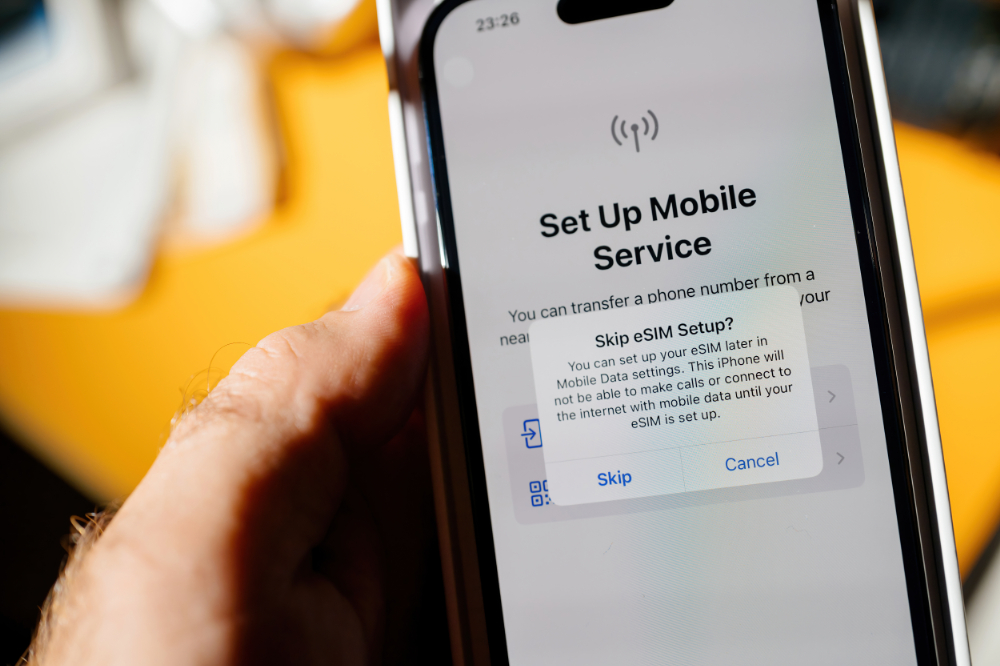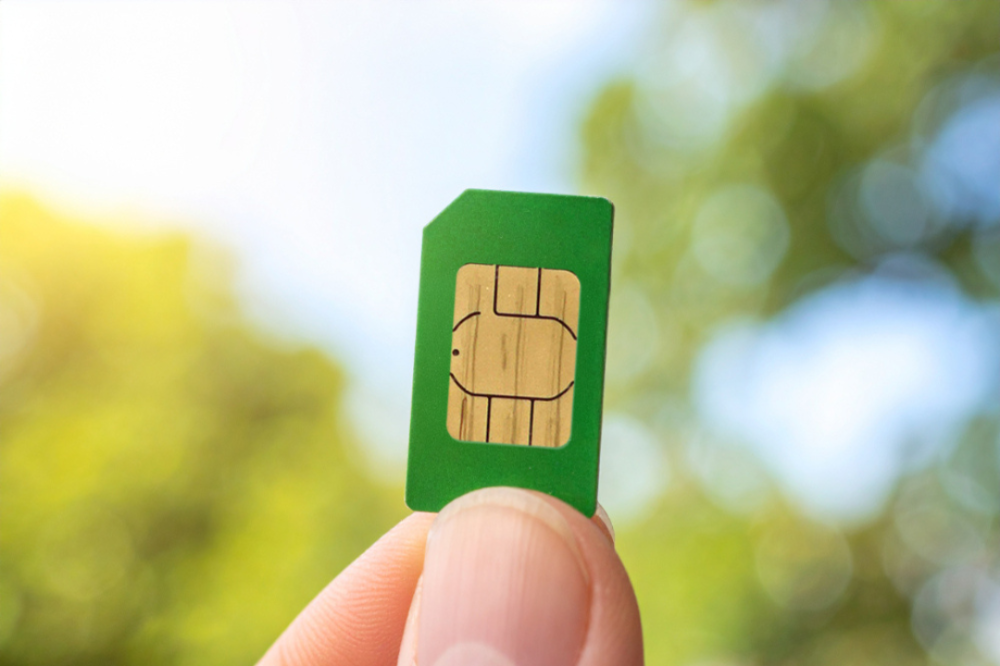Data SIM Card for Japan: Your Travel Internet Checklist Made Easy

Reliable internet access is a crucial component of modern travel, particularly in a country as technologically advanced as Japan. Having a dependable mobile data connection simplifies every part of the journey, from the moment you arrive and need to figure out how to reach your hotel, to the day you depart and wish to contact your family members or update pictures on social media.
For many travelers, a Japan data SIM card provides a practical and cost-effective solution to meet their various needs. It offers immediate access to local networks without the complexity of international roaming or reliance on free WiFi, which can be limited in both coverage and security.
This guide provides a detailed overview of how data SIM cards work in Japan, including where to find them, key considerations when choosing one, and how to maximize value for a memorable trip.
What is a Japan Data SIM Card

A data SIM card allows you to access mobile internet using Japan’s local networks during your stay. There are two main types of SIMs:
- Data-only SIMs: These provide internet access but do not support voice calls or SMS (except through internet-based apps like WhatsApp or iMessage).
- Voice + data SIMs: Less common for tourists, these include voice call and text messaging capabilities but are typically more expensive.
Most travelers opt for data-only SIM cards, which offer high-speed internet without unnecessary complications. To use a SIM in Japan, your phone must be unlocked and compatible with Japanese network frequencies. Many providers now also offer eSIM options, which are ideal for newer smartphones.
Where Can You Get a Japanese Data SIM Card?
There are several ways to purchase a SIM card in Japan. Each option comes with its advantages and limitations:
- Airports: Japan’s major airports feature vending machines and SIM card counters, many of which are designed with tourists in mind. Airport pickup ensures you’re connected as soon as you land, though it’s essential to double-check opening hours if you’re arriving late.
- Electronics Stores: Major chains like Yodobashi Camera and Bic Camera carry SIM cards in tourist areas. These stores often have multilingual staff and a variety of plans, but setup may take longer, especially if lines are long or if English support is limited.
- Convenience Stores: Some convenience stores offer prepaid SIMs, but the selection is limited; therefore, these are not recommended for first-time visitors.
- Online Orders and Delivery: Purchasing a SIM card in advance through providers like NINJA WiFi allows you to have it delivered to your hotel, Airbnb, or have it picked up at an airport counter. Ordering ahead is then ideal for travelers who prefer to have everything arranged before arriving in Japan.
Overall, online ordering is generally considered the most efficient choice for international visitors, especially when combined with airport pickup or hotel delivery.
Is a SIM Card Better Than Free WiFi?
You might wonder if a SIM card is essential in a country where free WiFi is accessible, particularly for a short trip. However, the issue with relying on free public WiFi in Japan is that it can be both risky and inconvenient. WiFi networks in cafés and hotels typically require passwords, have time limits, and lack proper security. Additionally, public WiFi spots tend to be scarce outside of urban centers.
Meanwhile, a data SIM card offers the benefit of secure, private, and constant internet access. Whether you're exploring temples and shrines or hiking in rural Hokkaido, having your own mobile data keeps you safe and connected.
Alternatively, a pocket WiFi device is another reliable option, especially for those traveling in groups or carrying multiple devices. While slightly bulkier than a SIM card, a pocket WiFi device can be a better choice for those who need to share a connection or wish to avoid swapping SIMs entirely.
3 Reasons You Need a Data SIM Card for Japan Travel

If you’re still uncertain whether or not a SIM card for Japan is the right choice, read on; below are three key reasons why a data SIM card is one of the smartest travel investments you can make.
Fast and Reliable Internet Anytime, Anywhere
Japan is renowned for having one of the most advanced mobile network infrastructures in the world, with excellent coverage from major carriers such as Docomo and Softbank. A quality data SIM card taps into these networks, giving you access to fast, reliable internet across the country—from Tokyo’s busy city center to more remote regions like the Nakasendo trail, the mountains of Nagano, or the coastal towns of Kyushu.
Having mobile data on hand signifies that you can instantly access maps, translation tools, rideshare apps, and up-to-date train schedules—no matter where you are. For travelers moving between regions, especially those planning to visit rural areas or less tourist-heavy destinations, a data SIM ensures constant connectivity, eliminating the need for spotty free WiFi or limited hotel networks.
For the best experience, SIM cards provided by NINJA WiFi use the above-mentioned top-tier networks, ensuring fast download speeds and stable connections, even in high-traffic areas.
Easy to Use and Stress-Free
Modern data SIM cards for Japan are designed with travelers in mind, offering easy setup, straightforward activation, and availability in both physical SIM and eSIM formats. Most require no paperwork and no local address—just insert the SIM, adjust your phone’s APN settings if prompted, and you’re ready to go.
Cost-Effective and Flexible for Any Travel Style
Using international roaming services from your local carrier in Japan can result in unexpectedly high charges, limited data speeds, or strict daily data caps. In contrast, purchasing a data SIM card in Japan offers far more control over your costs and data usage. With a variety of prepaid options tailored to different trip lengths and usage levels—such as 7-day, 15-day, or 30-day plans—you only pay for what you need.
Whether you're a light user who just needs GPS and messaging, or a heavier user who streams videos and uploads travel content, there's a plan to match your needs.
Data SIM Card vs. Unlimited Data SIM Card: Which Is Best for You?
When choosing a data SIM card for Japan, you’ll typically decide between a limited data plan and an unlimited plan. A restricted data SIM provides a fixed amount of high-speed data, such as 5 GB or 30 GB, for a specified duration. In contrast, an unlimited data SIM generally allows unrestricted usage. Still, it is often subject to a Fair Usage Policy, which implies that after you exceed a certain threshold of high-speed data—typically per day or over the life of the plan—your connection speed may be temporarily reduced.
Fair Usage Policies are in place to maintain overall network stability and prevent congestion during peak times. However, the throttled speeds usually remain sufficient for essential functions such as maps, messaging apps, and basic browsing, although they may not support high-quality video streaming or large file downloads. For most travelers, the speed reduction is minimal and does not interfere with typical daily usage.
Pros and Cons of Each Option
- Limited Data SIMs
- Pros: Lower cost, perfect for light users who primarily browse, check maps, or use messaging apps.
- Cons: It may run out quickly if you stream videos, share large files, or use hotspot features.
- Unlimited Data SIMs
- Pros: Ideal for heavy data users, long-term travelers, or those who rely on video calls, social media, or streaming.
- Cons: Higher cost, and speed reductions after high usage due to Fair Usage Policies.
Sample Plan Comparison
Here’s a quick look at some of NINJA WiFi’s SIM options, including both limited and unlimited plans:
| Plan Type | Data Allowance | Duration | Price (JPY) | Network |
| Standard | 1GB/day | 15 days | 4,422 | Docomo (4G) |
| Standard | 20GB total | 30 days | 5,049 | Docomo (4G) |
| Unlimited | Infinite | 15 days | 7,150 | Docomo (4G) |
| Unlimited | Infinite | 30 days | 9,900 | Docomo (4G) |
| High-Capacity | 30GB total | 60 days | 5,082 | Softbank (5G) |
| High-Capacity | 50GB total | 60 days | 7,205 | Softbank (5G) |
These flexible plans make it easy to find one that matches your travel length and usage.
What to Look for in a Japan Data SIM Card

With many options available, understanding what matters the most when choosing a data SIM card can help you avoid unnecessary complications during your trip.
Reliable Coverage and High-Speed Data
Choose providers that operate on Japan’s major carriers, such as Docomo or Softbank, for the best nationwide service. It’s recommended to avoid lesser-known brands, as they may rely on slower or consistent networks. However, you should also verify the details of what you are purchasing.
Support for Tourists
Prioritize providers that offer English-language support and provide simple activation instructions for added peace of mind. In addition to multilingual support, NINJA WiFi offers airport pickup at 10 major Japanese airports, including Narita, Haneda, Kansai International, and New Chitose, has counters in Tokyo, and provides nationwide delivery options. These services eliminate the stress of navigating language barriers or trying to set up a SIM card in a crowded electronics store.
Fair Pricing and Plan Options
Look for SIM cards with transparent pricing and duration-based plans, and ensure you calculate your estimated data usage to avoid overpaying. For example, a 1GB/day plan may be sufficient for standard travel needs, while unlimited data may be worth the upgrade if you plan to stream, work remotely, or share your connection with others.
Conclusion
A reliable internet connection can significantly improve both the safety and comfort of your trip to Japan. A data SIM card provides a simple and effective way to stay connected from arrival to departure, enabling you to navigate, communicate, and access information without interruption.
Importantly, choosing the right plan ensures a smoother and more efficient travel experience. Take a moment before your trip to compare options based on your itinerary and data needs, so you can explore Japan with confidence and uninterrupted access wherever you go.








